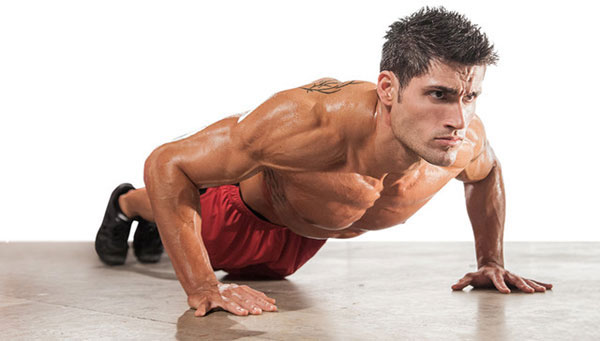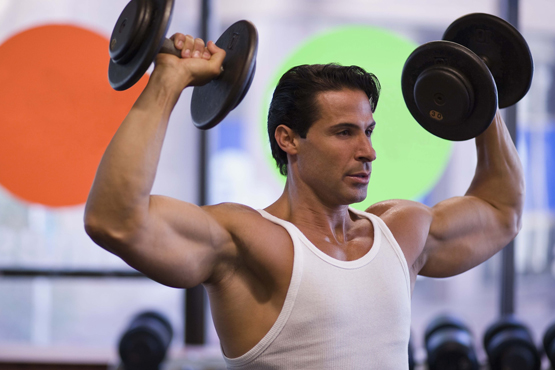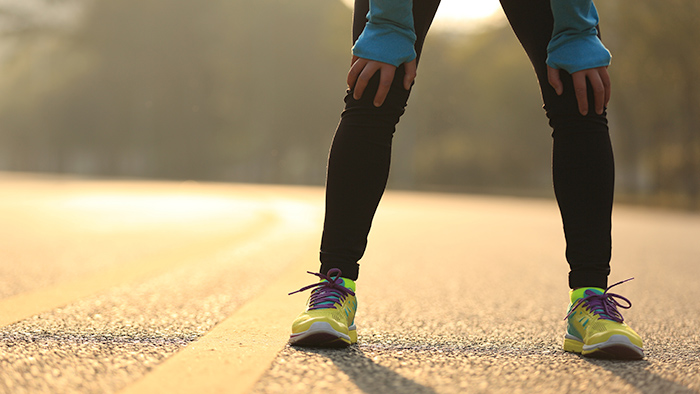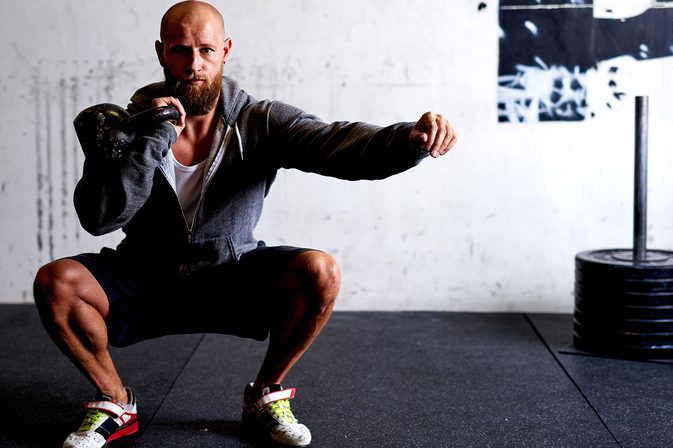Compilation of a complex of strength exercises

During exercise at home, we perform physical exercises. Depending on the intensity of muscle contraction, the duration of contractions and the force applied for this, they are divided into 3 groups:
- Strength exercises. They are characterized by a strong muscle tension at low speed and short duration of motion. They are divided into static and dynamic.
- Speed-strength exercises are dynamic exercises performed at high speed with intensive muscle contraction.
- Exercise for endurance. The main feature is the duration of execution; the intensity of the load on the muscles and the speed are small.
Benefits of training
Strength exercises help to lose weight, overcome depression, diseases of the cardiovascular system. Regular training at home will add self-confidence, stabilize the mood. The power complex exercise starts in the muscles the mechanism of energy transformation, by means of which they adapt to the increasing load.
The fatty layer decreases, muscle mass increases. The body does better at home and at work with physical exertion, it becomes more enduring. Bodybuilding is useful for the development of the main masculine qualities: courage, will power, constancy.
“The world has never been interested in weakness. He always held on to power. The same inner strength that years of training with iron add to us. So the main difference between us and others is not the muscular muscles, but another, incomparably high and strong spirit, “says Arnold Schwarzenegger.
Frederic Delavier, author of the book Anatomy of Strength Exercises, explains and illustrates the technology of performing each element of training in terms of anatomy and human physiology. The figures show the color of the muscles on which the load is applied, recommendations on how to perform and warnings against muscle injuries are given.

For beginners, this encyclopedia of bodybuilding is an indispensable guide for studying at home . Frederick Delavier is a French scientist, a former weightlifting champion; the anatomy and physiology of physical development is the subject of his scientific interest.
Anatomical differences
Before choosing a specific set of strength exercises for the home, determine your body type. There are 3 types:
- Mesomorphic – muscular anatomy of the body, broad bone, massive torso, no fatty layer;
- Endomorphous – an abundance of subcutaneous fat, a lack of muscle development, no athletic qualities;
- Ectomorphic – thinness, thin bone, weak muscles, thin fatty layer.
The easiest way to train is given to mesomorphs, because they have a strong, enduring body by nature. Endomorphs will first have to lose weight and take care of the acquisition of strong-willed qualities, and ectomorphs – intensively gain body weight and train endurance. In its pure form, the anatomy of the physique is rare; the human body combines the signs of different qualities, but one of them prevails.
To determine the type of physique, measure the circumference of the wrist. In adult men is found:
- 15-17, 5 cm – thin-boned structure;
- 17,5-20 cm – the average width of the bones;
- More than 20 cm – broad-boned type.
In women of the mesomorphic type, the figure resembles an hourglass, there is no excess weight, the wrist is easy to grasp with the thumb and middle finger. Endomorphic women are prone to fatness, they have a wide waist and hips, the wrist can not be wrapped around the fingers. Ladies-ectomorphs are thin, they have a thin-boned structure, narrow shoulders and hips; when the wrists wrap around their fingers, they swirl over each other.
The main thing is motivation
Regardless of the type of physique, each person is able to achieve success by training at home . Force, speed-strength and endurance exercises not only form a beautiful muscular relief. They are useful for health, the development of physical strength and endurance, the education of strong-willed qualities in men and women.
“Anatomy of Strength Exercises” contains the best strength exercises and training plans for women and men. Begin with programs for beginners, choosing them for their type of physique, personal qualities and adapting at home.
Motivation for training is initially unstable. The first 6-12 weeks, at home, you have to show steadfastness, permanence and will power. Visible results yet, but the body is actively resisting the load. With excess weight, the diet is also burdensome.
After 3-6 months, the first visible changes appear. At this stage, the amateur athlete wants a rapid development of the achieved power qualities, and the danger of exceeding the load is high. It is important to add stress at home gradually, changing the program no more often than once every 3 months.

The training program for men and women at home is designed for a year. For this period, an amateur athlete thoroughly studies the characteristics of his body, power qualities and selects for himself an effective load. He overcomes the plateau period – getting used to the power load and gradually increasing the number, intensity and number of repetitions of power and aerobic exercises.
Rules for beginners
Before training, warm-up is required at home or in the air, after it – stretching. Example of warm-up (7-10 min):
- Running on the spot – 3 min .;
- Rotation by brushes – 15 times;
- Swing your hands – 15 times;
- Rotation of the knee joints – 12 times;
- Slopes to the sides – 10 times;
- Tilting back and forth – 8 times;
- Head rotation – 6-8 times;
- Makhi straight legs – 6-8 times.
To perform strength exercises at home, you need dumbbells (preferably demountable), a low wide bench, weighting for hands and feet, a horizontal bar, a gym ball. If there is no sports equipment at home, use a bottle of sand, a bag of stones. The turnstile and the bars are on the playground in the courtyard.
For the development of muscles, the acquisition of a good physical shape and strong-willed qualities of an athlete there are no obstacles!
Strength training in the home is alternated with aerobic exercise (exercising on a stationary bike, running track, swimming, aerobics): power – 3 times a week, aerobic – 4 times a week (every other day). Once a month, increase the number of approaches (1-3) and repetitions for each exercise; between the approaches you need rest for 30-60 seconds.
Program for endomorphic type
- Standing, pushing from the crossbar – 8-15 times.
- Crouch, squeezing the ball between the legs – 8-15 times.
- Lying, lifting straight legs – 8-15 times.
- Lying on the ball, raise parallel to the floor opposite arm and leg – 6-10 times.
- Lying, feet on the feet. Raise your arms straight up, simultaneously raise your pelvis and back, keep your balance, leaning on your shoulders – 8-15 times.
- Stand on a low bench or staircase. To rise and fall on your toes 8-15 times.
- Standing, raise straight arms with dumbbells to the sides 6-12 times.
- Slopes with dumbbells 6-12 times.
- Press of dumbbells sitting – 6-12 times.
- Twisting by the body – 8-15 times.
After training , a 10-15-minute stretch is required to develop ligaments and relieve muscle tension.
Program for the mesomorphic type
- Standing on your knees, squeeze from the floor 10-12 times.
- Crouch, squeezing the ball between the legs – 10-12 times.
- Stand on a low bench or staircase. To rise and fall on your toes 10-12 times.
- Lying, feet on the feet. Raise your arms straight up, simultaneously raise your pelvis and back, keep your balance, leaning on your shoulders – 10-12 times.
- Lying on the ball, raise parallel to the floor opposite arm and leg – 6-10 times.
- Standing, raise the straight arms with dumbbells in the sides 10-12 times.
- Dips with dumbbells 8-12 times.
- The dumbbell press sitting – 8-12 times.
- Twisting by the body – 8-15 times.
- Lying on the floor, raise the knee bent in the knee and straighten it, slowly lowering to the floor – 6-12 times with each foot.
After training, a 10-15-minute stretch is required to develop ligaments and relieve muscle tension.

Program for the ectomorphic type
Low repetition rate is used. Instead of aerobic exercise, walking or running in the air for 15-20 minutes is recommended.
- Standing on your knees, squeeze from the floor 8-10 times.
- Crouch, squeezing the ball between the legs – 8-10 times.
- With weight on the shoulders, go up and down one leg to a low bench 8-10 times.
- Sideways on a bent leg with dumbbells in his hands – 8-10 times.
- Dips with dumbbells 8-10 times.
- Lying, feet on the feet. Raise the straight arms up, simultaneously raise the pelvis and back, keep the balance, leaning on the shoulders – 8-10 times.
- Lying on the ball, raise parallel to the floor opposite arm and leg – 6-8 times.
- The dumbbell press seated 6-10 times.
- Twisting by the body – 8-10 times.
- Lying on the floor, raise the knee bent at the knee and straighten it, slowly lowering to the floor – 6-8 times with each foot.
After training at home, a 10-15-minute stretch is required to develop ligaments and relieve muscle tension.
For greater efficiency, occupations at home are best alternated with training in the gym (1 training at home, 2 in the hall). You can compare the load used at home, with weights when training in the hall, and correct it. When compiling and changing the program for the development of individual strengths, it is recommended that a professional trainer be consulted.